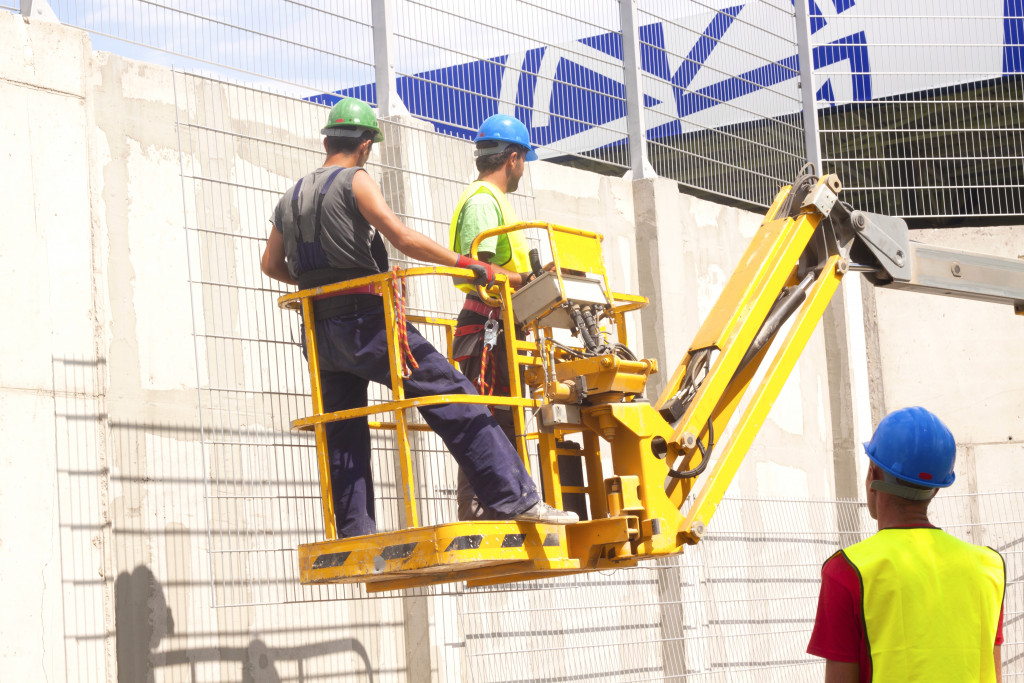In America, the construction industry employs over 11.2 million people, and one of the main areas of importance within this sector is employee and worker safety. This article highlights some specific areas of the construction industry and examines the factors that are involved in ensuring employee safety within those areas.
The Occupational Safety and Health Act
In America, health and safety are regulated in legal terms by the Occupational Safety and Health Act. This act was signed into law in 1970 by President Richard Nixon, and its purpose is to ensure safe working conditions for American workers.
The act has three primary sections. First, it prescribes regulations that ensure accurate occupational safety and health statistics are developed and maintained. Second, it establishes and regulates occupational health and safety programs. Third, it passes out federal government grants to individual states.
With the Occupational Safety and Health Act came the creation of the Occupational Safety and Health Administration (OSHA) and the National Institute for Occupational Safety and Health (NIOSH). OSHA enforces the rules and regulations of the act by levying fines and penalties on employers who disobey the rules or fail to meet the required safety standards.
A health and safety management program
For most American industrial companies, the first step in ensuring employee safety is to develop a health and safety management program.
The majority of health and safety programs are composed of four elements.
Management policy setting and employee involvement. A manager or a team of managers will develop the policy and then assign responsibility for initiating the policy throughout all levels of employees.
Work-site Analysis. The actual work site is regularly analyzed to identify existing and potential safety hazards.
Hazard prevention and hazard control methods. This involves the analysis and implementation of the various methods used to prevent or control safety hazards.
Safety training. Managers, supervisors, and employees are trained to identify and understand worksite hazards.
Safety measures within the construction industry
Out of all the occupations, construction presents the greatest amount of inherent dangers and safety risks. Construction sites will normally include heavy machinery, environmental hazards, and chemicals, all of which constitute possible safety hazards.
Fortunately, following some basic safety steps and procedures can substantially lower safety hazards on a construction site. The following are some specific areas of the construction industry and the safety measures used.
Crane Safety
Any high-rise construction project will involve using a crane which, while necessary, also represents a definite safety hazard. Safety risks associated with cranes normally come from either a crane being misused or a crane malfunctioning. To minimize crane safety risks, regular inspections should be conducted, and this will at least minimize the chances of a crane malfunctioning.
Other safety measures include the reevaluation of work orders and inspection of the area surrounding a crane. Inspecting the surrounding area is critical, especially when it comes to potential safety hazards, such as power lines. Another important aspect of crane safety is to barricade the swing radius and ensure that crane operators do not swing loads over workers or the public.
Safety measures when performing hydro-excavation work

One method to remove soil commonly used in the mining and construction industries is hydro excavation. Hydro excavation removes soil by using highly pressurized water blasts. The water blasts create what is referred to as a “slurry,” which is then removed by vacuum to reveal the layers of ground situated at a deeper depth.
The hydro excavation is normally performed by independent hydrovac companies specializing in this field and ensuring all necessary safety precautions are taken.
Safety measures involved in the hydrovac excavation include wearing personal protection equipment (PPE) at all times. The PPE will normally include non-slip footwear, ear muffs, and highly visible clothing. PPE will also include hard hats, safety glasses, industrial gloves, and respiratory equipment.
When engaging in hydro excavation, one important step to minimize safety hazards is to use a smaller nozzle that offers less flow and, at the same time, lowers the pressure settings. These are particularly important precautions to take where underground utilities are present.
It is important to remember not to point the nozzle at people or animals since the water flow is highly pressurized and can cause serious injury.
When washing utilities, a distance of 18 cm should be maintained, the pressure should be lowered, and the nozzle should be set to wash rather than blast.
Protection from scaffolding and falling
Scaffolding is used in the construction of all buildings. Because it involves height and bearing weight, it represents a safety threat. To minimize safety hazards associated with scaffolding, it is necessary to conduct regular scaffolding checks, inspecting security and stability.
When working with scaffolding and construction materials, it is important to maintain designated weight limits, and upward movement of material has to be conducted with extreme care.
Scaffolding should also include rigid guard rails to prevent falls, and when working on scaffolding, workers should be wearing hard hats.
Scaffolding is made from a conductive material, so it should be at least 10 feet from power lines. Plus, wherever possible, scaffolding should be made more secure against the supporting building.
Maintaining safe and healthy working conditions for workers is essential to maintain productivity levels. Indeed, studies clearly demonstrate that the safer and healthier the work environment is, the greater the productivity of workers becomes. Safety and health within the work environment are strictly covered by the 1970 Occupational Safety and Health Act, which is specifically designed to ensure and maintain the safety of American workers.

